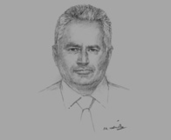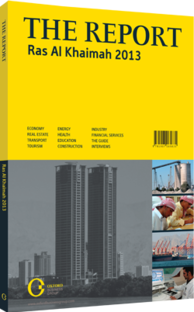OBG talks to Captain Colin Crookshank, General Manager, RAK Ports Group

Interview: Captain Colin Crookshank
How does RAK fit in with the other ports in the region? In what ways is it different?
CAPTAIN COLIN CROOKSHANK: As a large bulk commodity handling port, Saqr Port cannot really be compared to other ports in the region. The majority of large bulk ports globally are linked to one type of cargo, for example, coal or iron ore. Saqr Port handles aggregates, as well as coal, cement, clinker and important raw materials that are required for RAK’s manufacturing industries, however aggregate handling is the port’s largest bulk activity. Kuwait is our largest export destination and accounts for approximately 45% of Will railway development impact shipping?
CROOKSHANK: A large percentage of aggregate transported out of RAK travels by truck, and I am sure that some of this will switch to rail in the future. Whether rail can compete with shipping on cost – in terms of the significant volumes carried – remains to be seen. The intra-GCC rail freight network will not reach RAK until 2018-20. Additionally, some 20% of our bulk products go to India, and these would not be affected at all by rail.
How has activity changed over the years?
CROOKSHANK: At the height of the boom Saqr Port handled 30m tonnes per annum. This dropped to 26m during the downturn in 2009. In 2011 we handled 35m tonnes, and in 2012 we hit 46m tonnes. We recently broke our historical record of 4.4m tonnes per month, and we should achieve over 50m tonnes in 2013. We are continually updating machinery, which has an impact on improving the port’s capacity levels. In the past four years we’ve bought three new cranes, as well as a number of new shovels.
Which areas show the most growth potential?
CROOKSHANK: The quarry has more than 150 years’ worth of resources, and its exploitable area in the hinterland is rising exponentially, which means the future of the port is extremely bright. There is huge demand to expand capacity.
Overall, RAK ports have a broad range of activities: for example, Al Jeer has two port areas, one handling livestock and the other is a recreational marina. RAK Maritime City is the first free zone maritime industrial park in the region offering exclusive rights to the water. Khor Port in RAK has 16 warehouses, cold storage and a small passenger terminal, which we are seeking to develop as a key part of RAK’s tourist offering. Lastly, we have Al Jazeera Port, our ship repair yard and dry dock.
What potential impact could the expansion of the Saqr Port have on volumes, capacity, cargo handling and environmental management?
CROOKSHANK: Our 12-metre draft limits us to 60,000-tonne bulk carriers. Most Indian ports are built to a depth of between 14 and 16 metres, which allows for the handling of bigger ships. Deepening the Saqr Port would mean that we could export more to India, and it would allow us to get some of the larger vessels into deeper water, thereby freeing up some of the berths internally. Our customers will also be able to import and export products at a lower cost. Furthermore, our strategic master plan study is reviewing all options in terms of increasing port capacity. In addition, a significant part of this study concerns storage, cargo handling equipment and environmental management.
Your management structure is numerically small. Is this a help or a hindrance overall?
CROOKSHANK: A flat management structure is very important, as it speeds up our work and decision making and makes the port extremely attractive to investors and operators for business. We emphasise long-term projects, and we turn down any projects we don’t think will bring benefits towards this end.
You have reached the limit of premium articles you can view for free.
Choose from the options below to purchase print or digital editions of our Reports. You can also purchase a website subscription giving you unlimited access to all of our Reports online for 12 months.
If you have already purchased this Report or have a website subscription, please login to continue.

